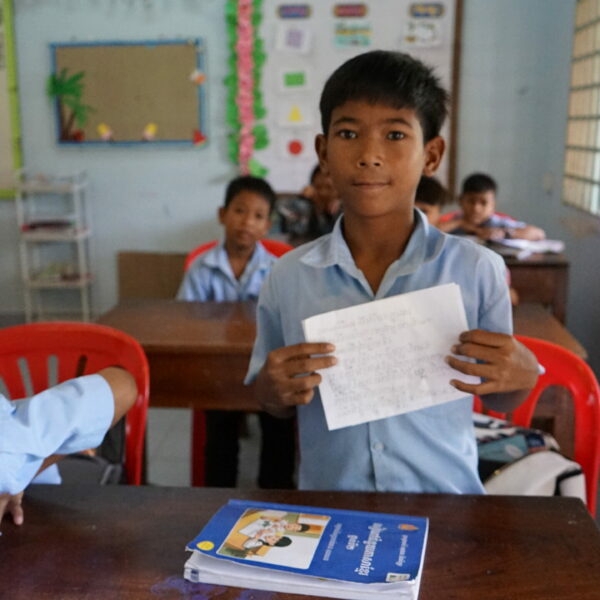A gray cloud looms over the sky of Kabwe, clearly visible from a distance as you travel the road that separates the city from the capital, Lusaka. It might appear as a harbinger of a heavy rainstorm, but it’s unusual for this time of year (we’re in April, in the heart of the dry season).
This isn’t an approaching storm or a passing condition; it’s the pollution cloud that constantly envelops the city. Pollution is a pervasive problem affecting communities worldwide, and Kabwe, in Zambia, faces one of the most severe cases of environmental pollution.
The lead and zinc mining activities in the region have left a disturbing legacy of contamination that poses significant health risks, especially to the most vulnerable populations, children, and the elderly. According to pollution experts, Kabwe is the most toxic city in the world, as mass lead poisoning has severely damaged the vital organs of generations of children.
According to studies conducted by various organizations such as Pure Earth and UNICEF, Kabwe is one of the most severely lead-contaminated places globally. Soil samples taken from various locations in Kabwe have shown incredibly high levels of lead, far exceeding international safety standards. The pollution problem in Kabwe can be traced back to its mining history.
The region once hosted one of the world’s largest lead and zinc mines, which operated from 1902 until its closure in 1994. Over the years, unregulated mining practices led to the release of toxic substances into the environment.
These particles settled on surfaces, crops, and water bodies, resulting in ingestion, inhalation, and absorption into the bloodstream. According to a 2019 study published in the Environmental Research journal, over 95% of Kabwe’s children have blood lead levels exceeding the limits set by the World Health Organization (WHO). The same study highlighted a clear link between blood lead levels and cognitive impairment in children.
Another study conducted by the Blacksmith Institute estimates that up to 60,000 children in Kabwe could be suffering from lead poisoning. The long-term consequences on the young population are devastating:
- Neurological Damage – Lead exposure in children can cause irreversible neurological damage, resulting in reduced cognitive functions, learning difficulties, and behavioral problems. Children’s brains are still developing and are particularly vulnerable, and continuous lead exposure hinders their ability to reach their full intellectual potential.
- Developmental Issues – Children exposed to lead are prone to developmental delays, hearing impairments, and delayed puberty. Lead disrupts the normal functioning of hormones, influencing both physical and mental development. It interferes with calcium absorption in the body, crucial for bone development, making lead-exposed children more susceptible to skeletal abnormalities and bone diseases.
- Anemia and Weakened Immune System – Lead hinders red blood cell production, causing anemia. Furthermore, it compromises the immune system, making children more susceptible to infections and illnesses.
- Kidney and Cardiovascular Risks – Some studies have shown a correlation between lead exposure and increased blood pressure, which can lead to cardiovascular diseases like hypertension and heart diseases in adulthood.
- Reduced IQ and Economic Productivity – Lead-exposed children tend to have lower IQ scores, affecting their academic performance and limiting future job opportunities. Several studies have demonstrated a strong link between lead exposure and cognitive impairment in children. For instance, a study conducted by the University of Michigan found that children with higher blood lead levels had lower IQ scores and were more likely to have attention, memory, and learning difficulties. This can perpetuate a cycle of poverty and hindered development in affected communities.
- Behavioral and Emotional Issues – Lead exposure has been linked to an increased risk of behavioral and emotional problems in children. A study published in the Journal of Pediatrics revealed that children with high lead levels were more likely to exhibit aggressive behaviors, impulse control difficulties, and emotional disorders such as anxiety and depression.
- Intergenerational Impact – Lead exposure can have intergenerational effects, as lead can be passed from a pregnant mother to her unborn child. Some studies have shown that maternal lead exposure can increase the risk of preterm birth, low birth weight, and developmental problems in newborns.
An international group of researchers conducted an intriguing study on the social cost that future generations will bear due to lead pollution in the Kabwe area.
Regarding remediation, options considered include cement capping of the landfill, which would gradually reduce lead levels in the soil and provide benefits to all areas of Kabwe, and the removal and replacement of soil in highly contaminated areas, which would immediately benefit residents in those areas. Results have shown that the benefits would outweigh the implementation costs of such engineering remediation measures.
However, these remediation measures alone wouldn’t immediately eliminate the pollution problem, so a combination of these remediation measures with alternative interventions might be the solution Addressing the pollution crisis in Kabwe requires concerted efforts from various stakeholders, including the Zambian government, which has actively worked to address the issue. The government has implemented and strengthened regulations regarding mining practices and environmental protection.
These regulations aim to minimize the release of lead and other hazardous substances into the environment. Additionally, the government has emphasized the enforcement of these regulations to ensure compliance by mining companies, even requiring comprehensive Environmental Impact Assessments (EIAs) before commencing operations.
Efforts have been made to identify and remediate lead-polluted areas, including soil and water remediation projects. These initiatives aim to restore affected areas and reduce lead exposure risks for local communities. On the other hand, the government has conducted public awareness campaigns to educate the population about the dangers of lead exposure and the importance of environmental conservation.
These campaigns seek to raise awareness among local communities, miners, and other stakeholders about the risks associated with lead pollution and promote responsible practices. Although these efforts demonstrate the commitment of the Zambian government to address the lead pollution problem, it’s essential to recognize that it’s a complex, long-term challenge, and an active involvement of affected community members is indispensable.
The Saint Paul Mulungushi community is located approximately 30 km from Kabwe and is thus affected by the consequences of lead pollution.
The Marist Brothers have been present and active in the area since 1960 with a primary and secondary school. They play a crucial role because, in addition to educating children, they are committed to supporting the economic and social development of the community, including collaborating with other religious congregations in the area. With the active involvement of FMSI, they have adopted a comprehensive approach to address the lead pollution problem, focusing on capacity-building initiatives within the community.
The Marist Brothers have provided support to community members, enabling them to engage in sustainable livelihood practices and become advocates for environmental conservation. This approach aims to create long-term solutions by promoting sustainable agriculture and alternative income-generating activities.
Access to clean and safe drinking water has also been ensured for the community through effective water extraction, filtration, and storage systems. Furthermore, access to medical services, including screening and treatment for lead poisoning, has been facilitated.
FMSI has supported various initiatives aimed at improving the healthcare infrastructure in the area, ensuring that affected individuals receive the necessary care and support.




